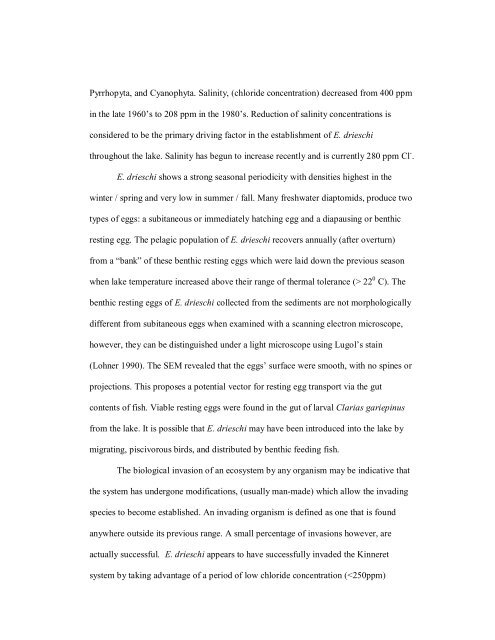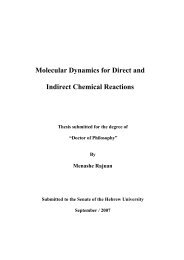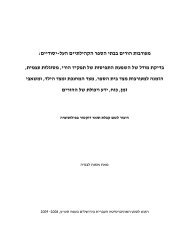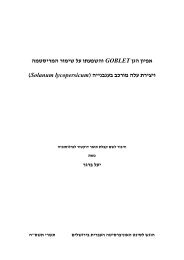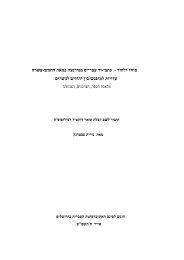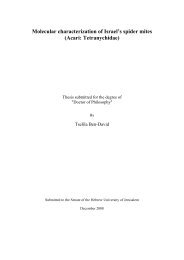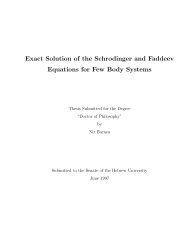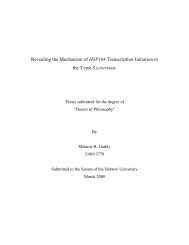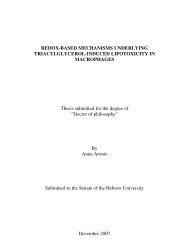The Autecology of Eudiaptomus cf drieschi (Poppe & Mrazek 1895 ...
The Autecology of Eudiaptomus cf drieschi (Poppe & Mrazek 1895 ...
The Autecology of Eudiaptomus cf drieschi (Poppe & Mrazek 1895 ...
Create successful ePaper yourself
Turn your PDF publications into a flip-book with our unique Google optimized e-Paper software.
Pyrrhopyta, and Cyanophyta. Salinity, (chloride concentration) decreased from 400 ppm<br />
in the late 1960’s to 208 ppm in the 1980’s. Reduction <strong>of</strong> salinity concentrations is<br />
considered to be the primary driving factor in the establishment <strong>of</strong> E. <strong>drieschi</strong><br />
throughout the lake. Salinity has begun to increase recently and is currently 280 ppm Cl - .<br />
E. <strong>drieschi</strong> shows a strong seasonal periodicity with densities highest in the<br />
winter / spring and very low in summer / fall. Many freshwater diaptomids, produce two<br />
types <strong>of</strong> eggs: a subitaneous or immediately hatching egg and a diapausing or benthic<br />
resting egg. <strong>The</strong> pelagic population <strong>of</strong> E. <strong>drieschi</strong> recovers annually (after overturn)<br />
from a “bank” <strong>of</strong> these benthic resting eggs which were laid down the previous season<br />
when lake temperature increased above their range <strong>of</strong> thermal tolerance (> 22 0 C). <strong>The</strong><br />
benthic resting eggs <strong>of</strong> E. <strong>drieschi</strong> collected from the sediments are not morphologically<br />
different from subitaneous eggs when examined with a scanning electron microscope,<br />
however, they can be distinguished under a light microscope using Lugol’s stain<br />
(Lohner 1990). <strong>The</strong> SEM revealed that the eggs’ surface were smooth, with no spines or<br />
projections. This proposes a potential vector for resting egg transport via the gut<br />
contents <strong>of</strong> fish. Viable resting eggs were found in the gut <strong>of</strong> larval Clarias gariepinus<br />
from the lake. It is possible that E. <strong>drieschi</strong> may have been introduced into the lake by<br />
migrating, piscivorous birds, and distributed by benthic feeding fish.<br />
<strong>The</strong> biological invasion <strong>of</strong> an ecosystem by any organism may be indicative that<br />
the system has undergone modifications, (usually man-made) which allow the invading<br />
species to become established. An invading organism is defined as one that is found<br />
anywhere outside its previous range. A small percentage <strong>of</strong> invasions however, are<br />
actually successful. E. <strong>drieschi</strong> appears to have successfully invaded the Kinneret<br />
system by taking advantage <strong>of</strong> a period <strong>of</strong> low chloride concentration (


